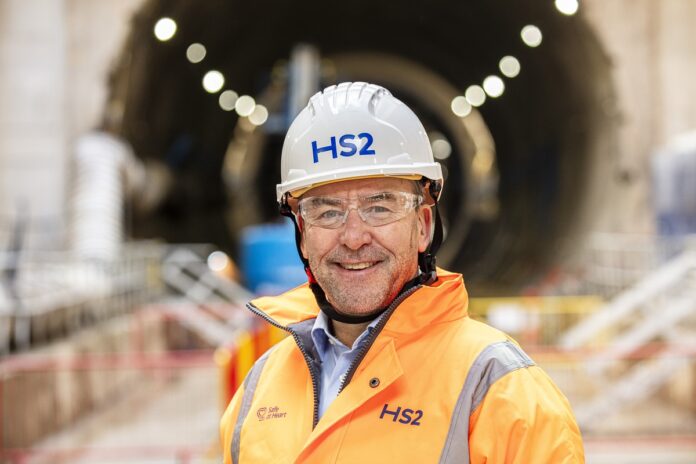HS2 Ltd Chief Executive Mark Wild today issued a powerful rallying cry to the property sector, urging them to capitalise on the immense investment opportunities being generated by Britain’s new high-speed railway.
Speaking at the UK’s Real Estate Investment and Infrastructure Forum (UKREiiF) in Leeds, Mark Wild highlighted how HS2 is already forging a significant corridor of growth between London and the West Midlands. Economic research by Arcadis indicates that HS2 is spearheading a staggering £20 billion boost in areas surrounding its new station sites in Birmingham, Solihull, and West London. The northeast Birmingham suburb of Washwood Heath has also become a magnet for investors, drawn by the location of the project’s new Network Integrated Control Centre and maintenance depot.
In the West Midlands alone, HS2 is the driving force behind plans for 41,000 homes, 30,835 new jobs, and 704,000 square metres of commercial floorspace near its three key sites: Curzon Street Station, Interchange Station, and the Network Integrated Control Centre.
Meanwhile, a new development hotspot is emerging in West London, propelled by HS2’s new 14-platform superhub station at Old Oak Common. Within 1.5 miles of the station, HS2 is set to generate over 22,000 homes, 693,000 square metres of commercial floorspace, and 18,782 jobs, according to the Arcadis research.
A Call to Action for Growth
Addressing the audience at the Royal Armouries in Leeds, Mark Wild stated: “The scale of investment and regeneration since HS2 received Royal Assent less than a decade ago is staggering, but the 140-mile route linking London to Birmingham is still ripe with opportunities, far beyond the £20bn boost we’re already seeing, and that’s why I’m here at UKREiiF.”
He delivered a clear message to potential partners: “HS2’s success and legacy relies on the investors and developers sitting in front of me today, and my message to them is simple – ‘Let’s deliver growth together’.”
HS2 represents the most significant addition to the rail network in over a century, laying the foundations for the future of Britain’s railways. Once operational, it promises significantly more reliable and faster journeys, almost halving travel times between the nation’s two largest cities. Crucially, it will also relieve pressure on the congested southern end of the West Coast Main Line, creating more capacity for local, regional, and freight services.
Despite recent progress, HS2 is currently undergoing a fundamental reset to ensure the railway can be delivered efficiently and for the lowest feasible cost.
Key Figures Backing the Vision
Influential figures from the urban regeneration, investment, and property development sectors, who have already recognised HS2’s impact, joined Mark Wild on stage to share their visions:
- Tom Wagner, co-founder of Knighthead Capital Management and owner of Birmingham City Football Club, outlined his vision for a new £3 billion Sports Quarter in East Birmingham. Enhanced transport connectivity is central to his plans for a new 60,000-seater stadium, a sports campus with training facilities, a new academy, community pitches, as well as leisure, commercial, and residential development, potentially creating around 8,500 jobs.
- Alice Sewell, Investment Director at Imperial College London, spoke about the world-leading university’s ambitious development plans. One Portal Way is one of four sites the university has acquired near HS2’s Old Oak Common Station as part of its drive to create 1,300 new homes, expand the innovation ecosystem, and enhance the West Tech Corridor.
- Craig Carson, Managing Director, Barratt West London, is spearheading plans to create a new town centre for Park Royal. This includes a brand-new Asda superstore and over 1,500 new homes, all designed with sustainability in mind. As a car-free residential development, Old Oak Common’s 14-platform station, with its HS2, Elizabeth line, Central line, and Overground services, is pivotal to these plans.
- Katie Trout, Deputy Chief Executive, West Midlands Growth Company, is actively connecting private sector investors and developers to some of the UK’s most significant regeneration schemes. At UKREiiF, the West Midlands is showcasing more than £20 billion of major investment opportunities, including Smithfield Birmingham, which sits adjacent to HS2’s new Curzon Street terminus.




